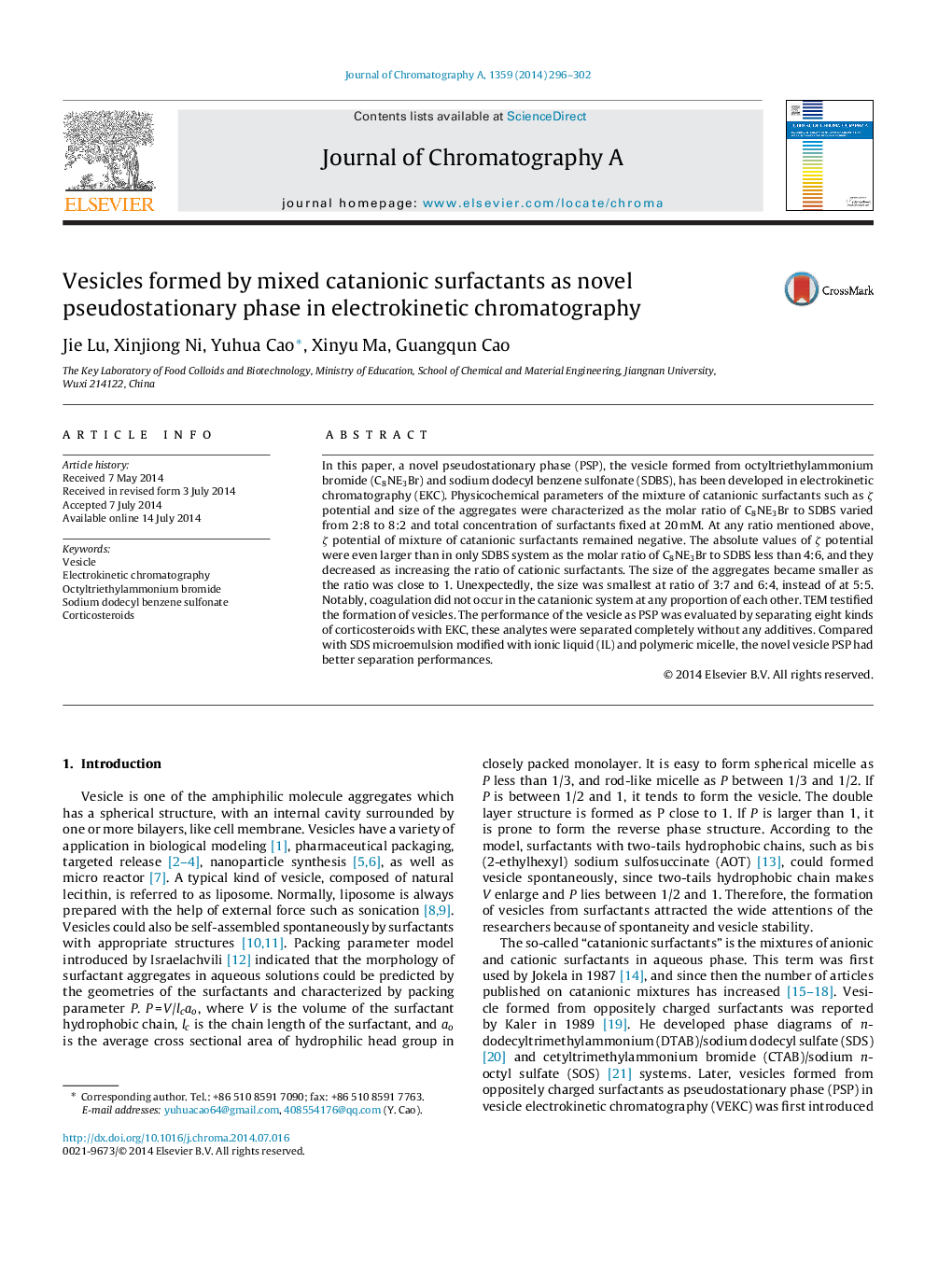| Article ID | Journal | Published Year | Pages | File Type |
|---|---|---|---|---|
| 1199411 | Journal of Chromatography A | 2014 | 7 Pages |
•A novel vesicle system formed by catanionic surfactants C8NE3Br/SDBS was developed as PSP in EKC.•C8NE3Br and SDBS could be mixed at any proportion without any agglomeration phenomena.•Eight kinds of corticosteroids with extremely similar molecular structures were separated completely using C8NE3Br/SDBS vesicle as PSP.•Compared with microemulsion modified with IL and polymeric micelle, the vesicle PSP had better separation performances.
In this paper, a novel pseudostationary phase (PSP), the vesicle formed from octyltriethylammonium bromide (C8NE3Br) and sodium dodecyl benzene sulfonate (SDBS), has been developed in electrokinetic chromatography (EKC). Physicochemical parameters of the mixture of catanionic surfactants such as ζ potential and size of the aggregates were characterized as the molar ratio of C8NE3Br to SDBS varied from 2:8 to 8:2 and total concentration of surfactants fixed at 20 mM. At any ratio mentioned above, ζ potential of mixture of catanionic surfactants remained negative. The absolute values of ζ potential were even larger than in only SDBS system as the molar ratio of C8NE3Br to SDBS less than 4:6, and they decreased as increasing the ratio of cationic surfactants. The size of the aggregates became smaller as the ratio was close to 1. Unexpectedly, the size was smallest at ratio of 3:7 and 6:4, instead of at 5:5. Notably, coagulation did not occur in the catanionic system at any proportion of each other. TEM testified the formation of vesicles. The performance of the vesicle as PSP was evaluated by separating eight kinds of corticosteroids with EKC, these analytes were separated completely without any additives. Compared with SDS microemulsion modified with ionic liquid (IL) and polymeric micelle, the novel vesicle PSP had better separation performances.
